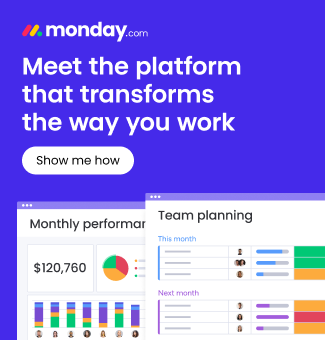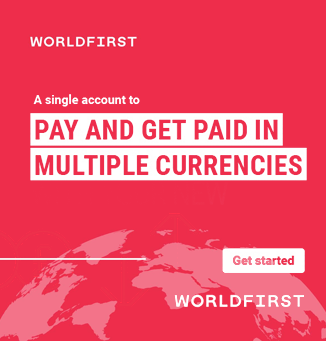If web development is your passion, setting up as a freelancer is an ideal way to add independence and variety to your working life. Whilst it’s a competitive industry to be operating in, it’s also a consistently evolving one, meaning that you can make a good living by staying in tune with and being able to implement the latest web languages and frameworks.
So, whether you’re a young web developer who wants to avoid regular full-time employment, are currently employed but looking to go it alone, or simply wish to set up a side hustle, here is our 10 step guide to setting up as a freelance web developer. Let’s get started.
1. Pick your speciality
The first decision that you must make is to choose the type of service(s) that you want to provide. As a web developer, broadly speaking the services you offer can be split into these categories:
Front-end – A focus on the coding of how a website looks and performs for the user
Back-end – A focus on the coding of a website’s fundamental functions
Full-stack – Front-end and back-end combined
Your decision should be based on your current level of proficiency (what are you good enough at that people would be willing to pay for?), what you enjoy doing, and the areas in which you may wish to expand into.
The choice you make can change, but to get started you need to ascertain what you are able to offer your clients now, and the areas which you need further experience or training.
2. Upskill if necessary
If you aren’t yet at a level where you can provide a service to prospective clients, the next step is to get the necessary training and accreditation. Even if you already possess a good level of knowledge, training up and being rewarded with certificates is a good way to demonstrate to clients that you are skilled and can deliver.
There are a wealth of courses to choose from that deal with all aspects of web development and programming, with prices and length varying. We recommend looking at the below sites and searching for the course(s) that meet your requirements:
3. Create your first customer personas
Because there are so many web development businesses out there, of all shapes and sizes, before you jump into completing your market research, it’s helpful to build a customer persona for how you envisage your first few customers.
Your personas should include demographic details such as age, gender, marital status, income and location, personality information including passions and hobbies, and vitally, the types of work you envisage that they want to be done.
A brand new website from scratch? An e-commerce site? One-page sites? Fixes on existing websites? App building? Plug-in installation? However, rudimentary it may seem, think about the types of services that you can offer.
The customer personas you create now will change, as they always do, but by building these first profiles, you are well-prepared to tackle the next research step as well as your marketing strategy.
4. Research your competition
Understanding what your soon-to-be competition is offering is a key step to starting any business. The problem you, as a web developer, will have is that there’s so much competition out there.
Start out with a broad search, looking at what the large and medium-sized agencies offer, how much they charge, and how they structure their pricing. Realistically, this will be nowhere near your initial rate, but it will give you an idea of what people are willing to pay.
Next, visit sites such as Upwork, Fiverr and Peopleperhour. This will be far more informative and should give you a direct steer on the services you could be offering, and the price range of what you can charge.
Finally, look at web-building platforms like Wix, Squarespace, Shopify and GoDaddy. They provide services that you’re probably going to sell, so they’re competition.
Document all your findings in a spreadsheet and once you have launched, be sure to revisit and update this sheet every few months to ensure your offering is always competitive.
5. Write your business plan
This is the step many prospective business owners choose to skip, or at least delay, as it’s too time-consuming and distracts from the start-up process. However, this is a mistake. A well-written business plan will provide value to you, even if it’s never seen by anyone else.
Vitally, this is where you map out your offering using your research. Exactly what services are you going to provide? What is your rate? Are you going to charge per hour or per project? How are you going to find customers? What is your year-end goal?
By documenting all the information you already have about your business, you will see the areas in which you are adequately prepared, as well as the areas that require attention.
Not sure how to structure your business plan? No problem. Read this blog: How to write a business plan as a start-up
6. Build your portfolio website
Now the marketing process begins. The first stage of this is to build a portfolio website that effectively advertises your services and, through the functionality of the website itself, showcases all of your talents (for example, is it mobile-friendly?).
Even if your initial moves in the market are going to be through dedicated freelance service sites, as someone working within web development, it’s an absolute must that you have a strong website.
Your portfolio website should include all the features that you would associate with any other functioning website:
- Information about your services
- Information about your pricing
- Information about you
- Previous work
- Content such as blogs and videos
- Contact details
- Social media handles
As this suggests, this will take time. If your current skillset isn’t strong enough to take care of the entire building process of the site, or the content to be included on it, outsource the tasks that you’re not adept at. It’s imperative that you get this right.
7. Get insured
As a web developer, you will be working closely with other businesses and their data. This can put you in a vulnerable position if you (or further down the line, someone employed by you) make a mistake.
For example, a small coding error could shut an e-commerce site down for a period of time, costing your client a significant amount of money. Or, you may come under a form of cyber attack and unknowingly leak sensitive data (yours or a client’s).
Having the right form of insurance coverage in place (in these scenarios, professional indemnity insurance and cyber insurance) could make the difference between your company closing down or being able to continue.
Before you take on your first client, we recommend shopping around and finding the cover that’s right for you. Insurance rates are competitive (often under £10 per month), and you will find that the main providers offer dedicated insurance for web developers and designers.
8. Choose your business structure
In the UK, someone looking to start their own business generally has two structures to choose from, sole traderships and limited companies.
There are advantages and disadvantages to both (that we cover in our ‘Sole trader and limited company – what’s the difference?’ article). However, the limited liability – this means the business owner has financial protection – and professional image a limited company provides, makes forming a limited company a popular choice for anyone looking to offer a specialist service, such as web development.
- What is a company limited by shares?
- The differences between a company director and a sole trader
- Going into business with family or friends – 5 essential tips
If you decide that a limited company is the right structure for you, we have a number of company formation packages that can get you started in as little as 24 hours.
Browse our company formation packages here, and if you have any questions about picking the right structure, simply leave a comment on this post and we’ll get back to you as soon as possible.
9. Launch your web developer business
The exciting part is opening up for business. Start off by advertising on the freelancer sites that we’ve already mentioned in this post. Don’t be surprised if you need to deviate from your preferred rate in the beginning. At this stage, it’s about getting the clients in and building up a solid portfolio of satisfied customers.
Talk to friends and family to see if they know anyone who’s looking to build or fix a website. Research local businesses (think florists, hairdressers, mechanics, restaurants, and pubs) and time-affording, create bespoke one-page websites showcasing what you could do for them.
Engage on social media, telling everyone you know about your new business. And of course, if you haven’t done so already, ensure your own website is optimised for search.
When offers start coming in, respond to them in a timely and professional fashion. Whilst slightly lowering your rates at this stage is fine, it can be tempting to take on work that ideally, you shouldn’t.
Deadlines may be unrealistic. Projects unfeasible. Clients unagreeable. In these instances, it’s our advice to stick firm with your principles and only accept the work that you can be proud of, and turn down the work that could do more harm than good. Of course, this is easier said than done.
10. Keep learning
For your business to have any staying power, you must keep on top of the latest industry advancements and trends. No field evolves faster than the web. For every meeting you have with a client, new or old, it’s your duty to be aware of the latest solutions that could help them. If you can’t offer this, they will move on.
Regularly check in on industry-leading websites (including Reddit). Subscribe to newsletters. Listen to podcasts. Follow the right social media accounts.
See here for a list of web developer news sources.
Thanks for reading
So there you have it, the 10 steps to starting up as a freelance web developer. We hope you find this post helpful as you look to take your first strides into a career in web development, one that could be both creatively and financially rewarding.
Please leave a comment if you have any questions.
Please note that the information provided in this article is for general informational purposes only and does not constitute legal, tax, or professional advice. While our aim is that the content is accurate and up to date, it should not be relied upon as a substitute for tailored advice from qualified professionals. We strongly recommend that you seek independent legal and tax advice specific to your circumstances before acting on any information contained in this article. We accept no responsibility or liability for any loss or damage that may result from your reliance on the information provided in this article. Use of the information contained in this article is entirely at your own risk.














Join The Discussion